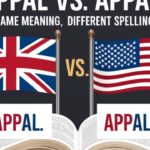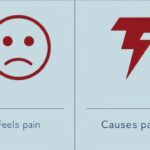No Harm, No Foul is a phrase people use when something goes wrong but does not cause any real damage or trouble. It comes from sports, where players let small mistakes pass if the game continues fairly.
The saying started in basketball and spread to other places like work, school, and daily life. It helps people stay calm and friendly, showing that minor errors do not need punishment or strict attention.
Today, people use it in everyday situations. Parents, teachers, and friends often say it to explain leniency or forgiveness. It teaches that fairness and understanding matter more than minor mistakes or accidents.
What Does “No Harm, No Foul” Mean?
The phrase No Harm, No Foul means that if no damage or trouble happens, people do not need to be blamed. It shows that small mistakes can be overlooked when everything stays safe and fair.
People use it in games, school, and daily life. It helps everyone stay calm and friendly by focusing on outcomes instead of minor errors. This idea teaches fairness and understanding in simple, everyday situations.
Variations in meaning
| Context | Meaning |
| Sports | No penalty if the opposing player wasn’t hurt or disadvantaged. |
| Everyday Use | “It’s okay, don’t worry about it.” |
| Workplace | A rule was technically broken, but it didn’t cause problems. |
| Legal/Ethical | A breach occurred, but no measurable harm was caused, so no punishment is warranted. |
Nuance Matters
Nuance matters because small differences in meaning or situation can change how people feel. Even if no harm happens, using the phrase at the wrong time can upset someone. Paying attention helps keep interactions fair and kind.
Understanding the subtle details of a situation makes communication better. It teaches people to notice feelings, respect others, and use words carefully. This helps prevent mistakes and shows thoughtfulness in everyday life.
See also : Delve Into Meaning, Origin, Synonyms & Use Cases
Historical Origin of the Phrase
The historical origin of this phrase comes from basketball in the 20th century. Players used it to show that small mistakes on the court do not need a penalty if they do not affect the game.
It also appeared in everyday life and work settings. People started using it to handle minor errors calmly. The phrase reflects fairness and the idea that small problems should not cause big trouble.
Key Early Appearances
- Streetball culture – Players used it to settle minor disputes without referees.
- Basketball courts – Helped manage fairness when small contacts happened during games.
- Military settings – Informally used to dismiss minor mistakes or incidents.
- Industrial workplaces – Workers applied it to calm small accidents or errors.
- Urban slang – Gained popularity in everyday conversations before spreading to pop culture.
Basketball Roots and Popularization
Where It Took Off: The Courts
The phrase became popular on basketball courts where players had to manage fairness themselves. Small contacts or mistakes did not stop the game. Everyone agreed to focus on the play instead of calling minor errors.
Courts helped the saying spread to other areas. Players, coaches, and fans started using it in daily life to show leniency and keep situations calm. It teaches that minor problems should not disturb the flow of activities.
Why Basketball?
- Basketball is a fast-paced game with lots of movement and small contacts.
- Players needed quick decisions to keep the game flowing smoothly.
- Fairness was often judged by consensus instead of referees.
- Minor mistakes rarely affected the outcome, making the phrase practical.
- The sport allowed street-level culture to influence broader language and everyday use.
Chick Hearn’s Influence on Popularizing the Phrase

No discussion of this idiom’s rise is complete without Chick Hearn, the legendary Los Angeles Lakers commentator.
Who Was Chick Hearn?
- Chick Hearn was the voice of the Los Angeles Lakers for over 40 years.
- He broadcasted basketball games on TV and radio across the United States.
- He invented famous basketball terms like “slam dunk” and “air ball.”
- Hearn helped popularize No Harm, No Foul in mainstream sports commentary.
- His clear and catchy style made basketball language easier for fans to follow.
Why His Influence Mattered
- His TV and radio broadcasts brought the phrase to millions of viewers.
- He translated street-level slang into mainstream sports language.
- Fans learned to use basketball terms in everyday conversations.
- Frequent use made the phrase memorable and popular across generations.
- Hearn’s storytelling helped connect sports culture with wider social and media contexts.
Cultural Adoption Beyond Basketball
Once it left the court, the phrase took off in pop culture. Here’s where it started showing up:
Common Media References
- TV shows like The Office and Scrubs used the phrase to show leniency.
- Legal dramas like Law & Order included it in casual dialogue.
- Movies such as White Men Can’t Jump referenced the saying in sports scenes.
- Hip-hop songs and sports anthems sometimes mention it for playful effect.
- Online memes and forums use it to settle small arguments or misunderstandings.
See also : Stick a Fork in It – Meaning, Origin & Modern Use
Idiom Evolution
- The phrase started as a basketball term for minor game mistakes.
- Players and fans began using it in daily conversations.
- It spread to workplaces to describe harmless errors.
- Generations like Gen X, Millennials, and Gen Z adopted it differently.
- Today, it shows leniency and understanding in social, professional, and casual situations.
Modern Everyday Usage
Here’s how “no harm, no foul” is used in real life – beyond the scoreboard.
Workplace Example
In the workplace, small mistakes happen, like missing a deadline by a short time. If the team still finishes the task well, leaders can stay calm and focus on results instead of punishing minor errors.
Using this idea helps keep the office peaceful and friendly. Employees learn that small problems do not matter much when the overall work succeeds. It shows the importance of understanding and teamwork.
Parenting Example
In parenting, children sometimes make small mistakes, like spilling water or dropping toys. If nothing is broken, parents can stay calm and focus on teaching care instead of scolding for minor accidents.
This approach helps kids feel safe and understood. Parents show that small errors are okay when handled gently, teaching patience and kindness in everyday life.
Social Conflict Example

In social conflicts, friends sometimes forget small things, like replying to a message late. If no harm is done, people can stay calm and focus on keeping the friendship strong instead of getting upset over minor issues.
This idea helps everyone stay friendly and peaceful. It shows that small mistakes should not hurt relationships, and being understanding is more important than focusing on minor problems.
Conclusion
The phrase teaches people to stay calm when small mistakes happen. It shows that minor problems do not need punishment, and focusing on fairness and understanding helps everyone feel safe and respected in daily life.
Using this idea in sports, school, work, and home encourages kindness and patience. It reminds people that small errors should not stop progress, and being thoughtful and fair makes relationships and activities smoother for everyone.
FAQS
What Does No Harm No Foul Mean?
No harm, no foul means if no damage or trouble happens, there is no need to assign blame. Minor mistakes can be overlooked.
Where Did No Harm No Foul Originate?
The phrase originated in basketball and streetball culture in 20th-century America, later spreading to daily life, workplaces, and casual conversations.
What Is the English Law of No Harm, No Foul?
In English law, there is no formal principle called no harm, no foul. It is used informally to describe minor harmless mistakes.
Who Said “No Harm, No Foul”?
The phrase became widely popular through Chick Hearn, the Lakers’ commentator, who frequently used it in basketball broadcasts and media.

Join Bibcia on a journey to master English grammar. Discover easy lessons, writing tips, and practical examples designed to make learning grammar simple and effective.










